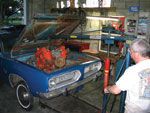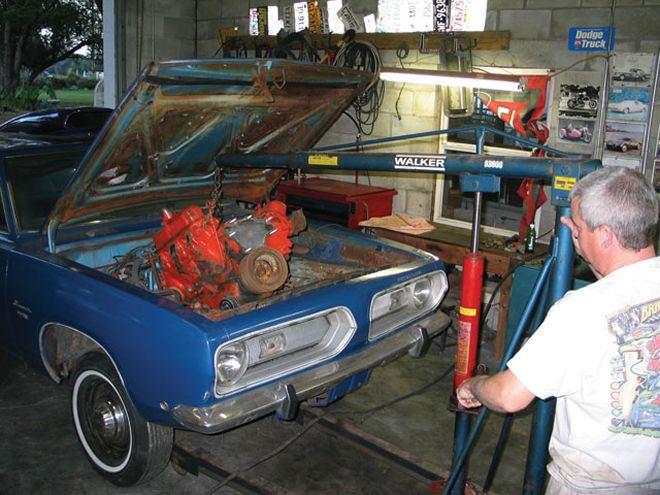
 Pulling your engine for an overhaul doesn't necessarily mean a high-dollar trip to the machine shop. If your small-block is just plain worn out, you might be able to save some cash by freshening it up at home.
Pulling your engine for an overhaul doesn't necessarily mean a high-dollar trip to the machine shop. If your small-block is just plain worn out, you might be able to save some cash by freshening it up at home.
The words "engine rebuild" can have many meanings depending on the context in which they are used. To some, rebuilding an engine means having every part machined to better-than-new tolerances, and replacing all the items that are designed to wear with new parts. To others, an engine rebuild comes in a can of miracle additive that you simply pour into your engine's oil system. Depending on the condition of your engine, rebuilding it is usually a realistic compromise between the two extremes stated above. Most engine rebuilds will require a certain amount of machine work, and most will also require some new parts, but how do we quantify what constitutes a rebuild? We like to think a true rebuild means blueprinting the engine to at least factory tolerances, and that anything less should be considered an overhaul or simply maintenance.
So by that standard, an engine "rebuild" is not something most of us can do in our home shop, unless our home shop has sophisticated machining equipment and is next to a parts warehouse. An engine "overhaul," however, can usually be accomplished by an average enthusiast with standard hand tools and a few specialty items. By "overhaul," we don't mean machining or replacing every part of an engine, but rather checking the critical dimensions and replacing the parts, such as piston rings and crankshaft bearings, that are designed to wear. We aren't talking about making the engine as good as new, but rather sealing it with new rings, a simple valve job, and a gasket set, and improving performance by installing a new timing chain and gears, a new cam and valvesprings, and a four-barrel intake and carburetor.
The engine we'll be using for this project is a '72 318 we inherited with a car purchased from an internet auction site. We were told, of course, that this was a "good engine," but instead of taking our chances we decided to tear it down for an overhaul. Typically, if an engine is in running condition when torn down, an improvement in performance will be seen by simply reringing, resealing, and installing new bearings in the motor. This is an economical technique to make a high-mileage engine more reliable and more drivable, and will certainly benefit an engine that burns some oil or smokes a little. If your engine is severely worn, however, we always recommend having it machined to the proper tolerances to ensure it will perform properly when re-assembled.
As it turned out, the teardown revealed our engine wasn't even close to being in running condition. We had hoped to simply hone the cylinders and rering it, but severe corrosion in a couple of the bores dictated that we bore the cylinders oversize and order the appropriate pistons. Fortunately, our crankshaft and rods were in good shape, with the crank just needing to be polished before we could re-use it. So while we won't be entirely performing the overhaul on our motor without the help of an outside machine shop, we will show you what tools and techniques are needed to overhaul your engine at home in case your engine is a better candidate than ours.
This month, we'll teardown, inspect, and clean our engine. Be sure to look for the second part of our article detailing the engine assembly in a future issue.